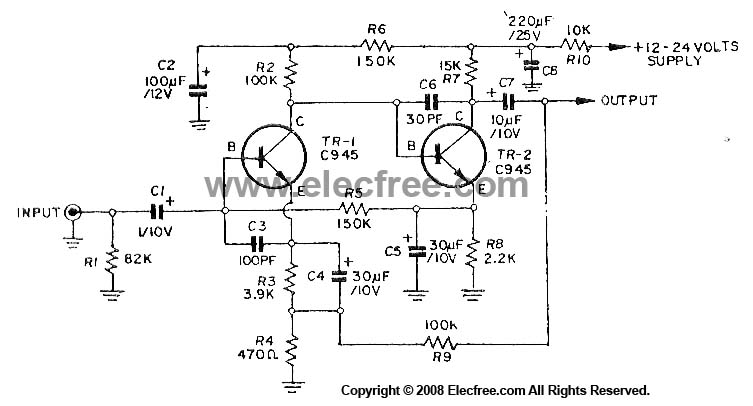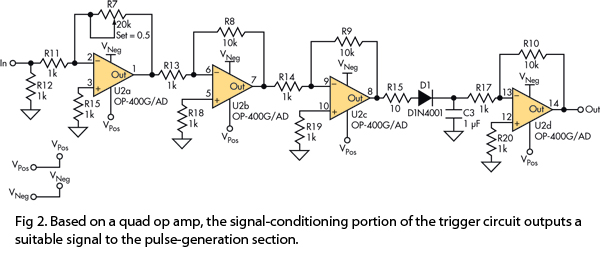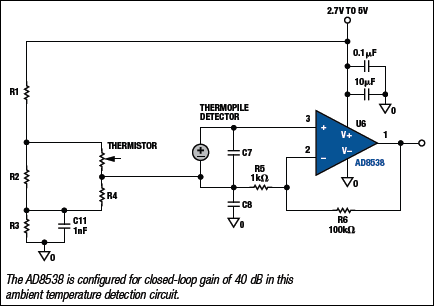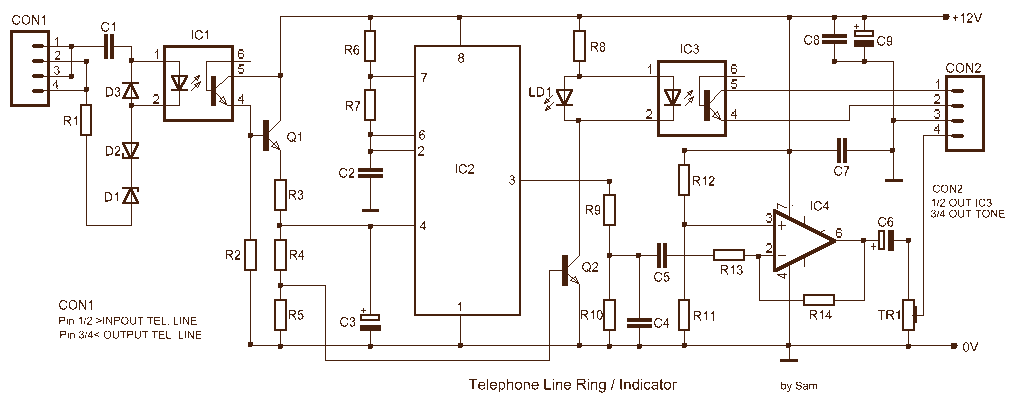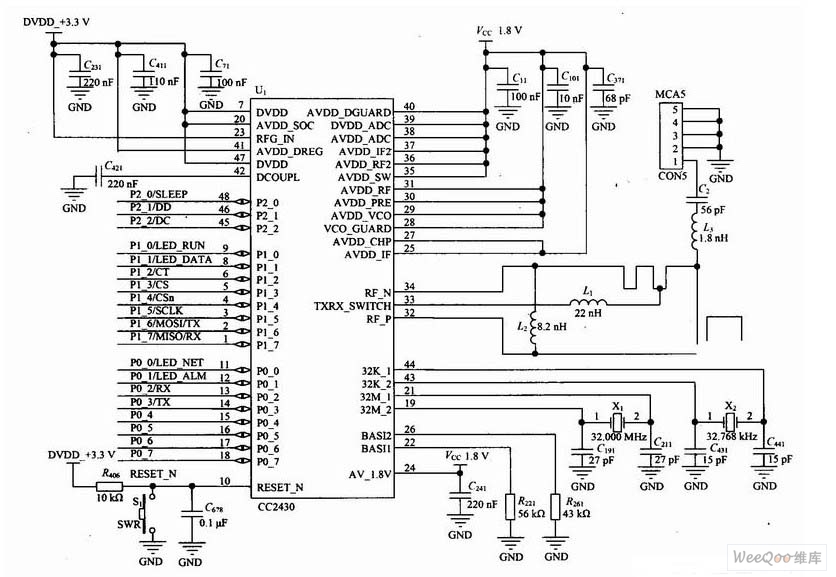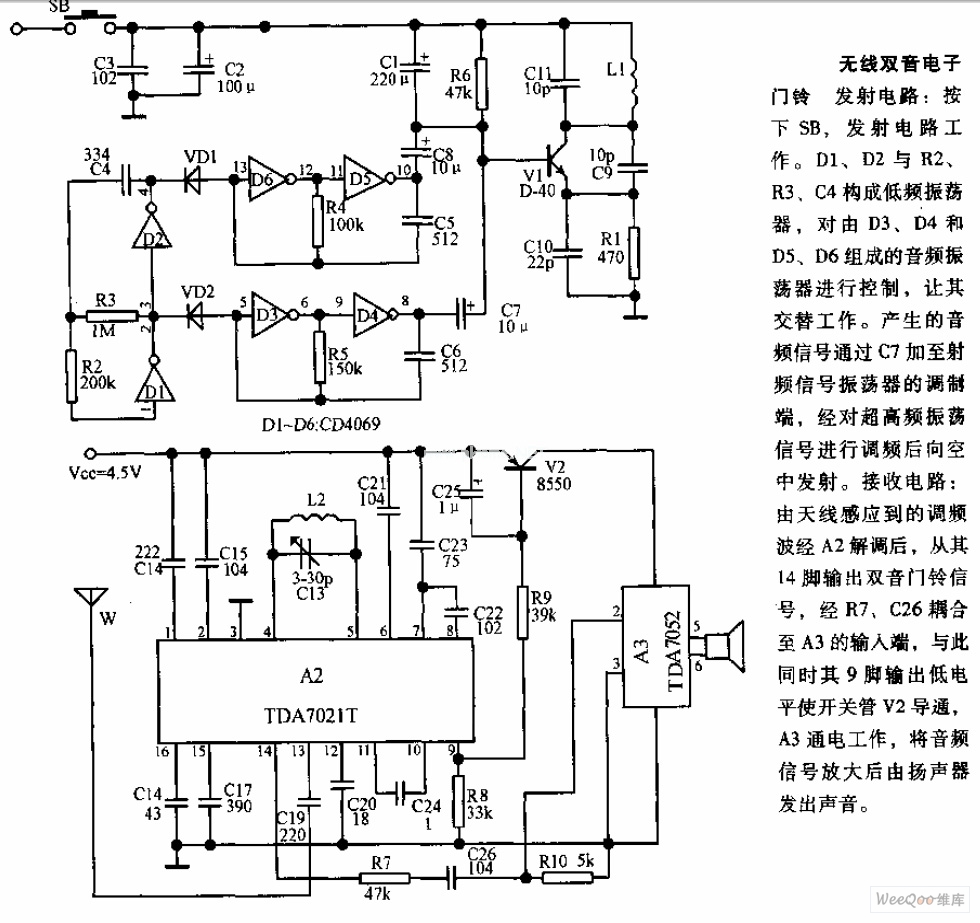
One Direction Motion Sensor
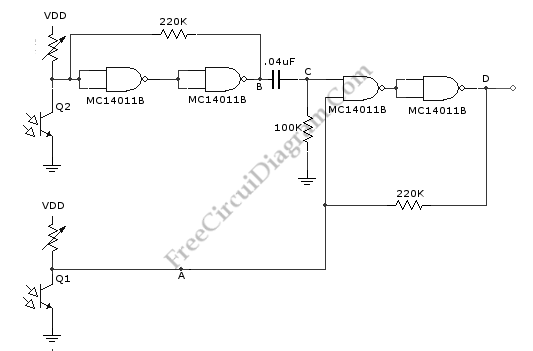
This is a one-direction motion sensor circuit. This motion sensor circuit is designed to detect an object moving in one direction while ignoring objects moving in the opposite direction. The circuit employs two sensors to identify movement solely in one direction. The fundamental principle of this circuit is straightforward, where one sensor generates a short pulse, and the other sensor is responsible for blocking or turning the gate. The phototransistors produce a high output at their collectors when an object obstructs the light. A 0.4 µF differentiator capacitor is used, whereby the interruption of light at the Q2 sensor generates a short pulse at point C. However, this short pulse will only be present at the output if a high signal is detected at point A. This condition is met when the light to Q1 is blocked by the object while the object is passing through Q2, indicating that the direction of movement is from Q1 to Q2.
The one-direction motion sensor circuit utilizes two phototransistors, Q1 and Q2, strategically placed to monitor a designated path. Q1 is positioned to detect the initial obstruction of light as an object approaches, while Q2 is placed downstream to confirm the direction of movement. When an object passes through the detection zone, it first blocks the light at Q1, causing a high output signal at point A. This signal is essential as it enables the circuit to register that an object is entering the detection area.
As the object continues moving toward Q2, it subsequently blocks the light at Q2. The interruption at Q2 triggers the differentiator capacitor (0.4 µF), which generates a short pulse at point C. This pulse is critical for the circuit's functionality, as it signifies that an object has passed through the detection zone in the intended direction. The circuit is designed such that the pulse at point C will only result in a high output if the signal from Q1 is also high, thus ensuring that only objects moving from Q1 to Q2 are detected.
The output of the circuit can be connected to various devices, such as alarms, counters, or automated gates, to perform specific actions based on the detected motion. This configuration allows for precise control and monitoring of movement in a designated area, making it suitable for applications in security systems, automated access control, and traffic monitoring. The simplicity of the circuit design, combined with the reliability of the phototransistors, ensures effective operation in various environments.This is a one direction motion sensor circuit. This motion sensor circuit is used to detects an object passing in one direction, ignoring an object that going to opposite way. This circuit uses two sensors to identify the movement only in one direction. The basic principle of this circuit is simple, where one sensor is used to generate a short pu lse, and the other sensor is used to block of turn of the gate. The phototransitors give high output on their collectors when there is an object blocking the light. By a 0. 4uF differentiator capacitor, the interruption of light at Q2 sensor will produce short pulse at point C. But this short pulse will only appear at the output if a high signal appears at A. This condition will be satisfied if the light to Q1 is blocked by the object when the object is passing through Q2, means that the direction should be from Q1 to Q2.
Here is the schematic diagram of the circuit: 🔗 External reference
The one-direction motion sensor circuit utilizes two phototransistors, Q1 and Q2, strategically placed to monitor a designated path. Q1 is positioned to detect the initial obstruction of light as an object approaches, while Q2 is placed downstream to confirm the direction of movement. When an object passes through the detection zone, it first blocks the light at Q1, causing a high output signal at point A. This signal is essential as it enables the circuit to register that an object is entering the detection area.
As the object continues moving toward Q2, it subsequently blocks the light at Q2. The interruption at Q2 triggers the differentiator capacitor (0.4 µF), which generates a short pulse at point C. This pulse is critical for the circuit's functionality, as it signifies that an object has passed through the detection zone in the intended direction. The circuit is designed such that the pulse at point C will only result in a high output if the signal from Q1 is also high, thus ensuring that only objects moving from Q1 to Q2 are detected.
The output of the circuit can be connected to various devices, such as alarms, counters, or automated gates, to perform specific actions based on the detected motion. This configuration allows for precise control and monitoring of movement in a designated area, making it suitable for applications in security systems, automated access control, and traffic monitoring. The simplicity of the circuit design, combined with the reliability of the phototransistors, ensures effective operation in various environments.This is a one direction motion sensor circuit. This motion sensor circuit is used to detects an object passing in one direction, ignoring an object that going to opposite way. This circuit uses two sensors to identify the movement only in one direction. The basic principle of this circuit is simple, where one sensor is used to generate a short pu lse, and the other sensor is used to block of turn of the gate. The phototransitors give high output on their collectors when there is an object blocking the light. By a 0. 4uF differentiator capacitor, the interruption of light at Q2 sensor will produce short pulse at point C. But this short pulse will only appear at the output if a high signal appears at A. This condition will be satisfied if the light to Q1 is blocked by the object when the object is passing through Q2, means that the direction should be from Q1 to Q2.
Here is the schematic diagram of the circuit: 🔗 External reference
